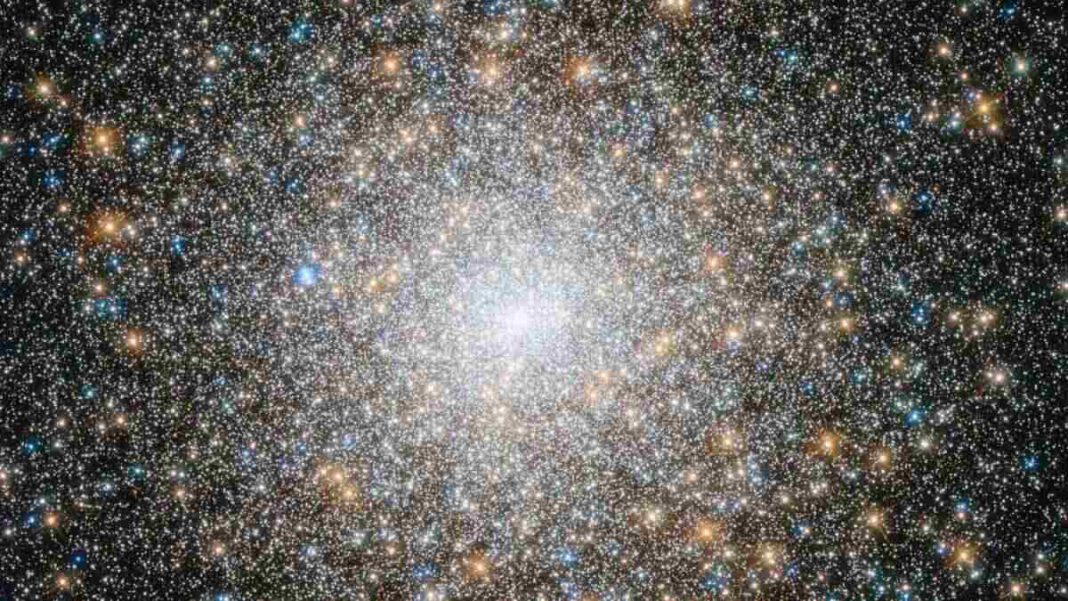UNITED STATES: In a groundbreaking revelation, the James Webb Space Telescope (JWST) has unveiled tantalizing evidence that challenges our current understanding of the cosmos.
JWST provides new insight about the universe
This state-of-the-art observatory has captured glimpses of enormous “celestial monster” stars, several thousand times more massive than our Sun, lurking at the dawn of the universe. This discovery, published in the esteemed journal Astronomy and Astrophysics, marks a crucial step forward in our quest to comprehend the mysteries of our celestial origins.
Led by Professor Corinne Charbonnel, an astronomy expert from the University of Geneva, a team of European researchers has uncovered what could be the first clue to the existence of these extraordinary stellar entities.
Until now, the largest observed stars anywhere in the cosmos boasted a mass approximately 300 times that of our Sun. However, the colossal “celestial monsters” described in the recent study dwarf all previously known stellar giants, with estimated masses ranging from 5,000 to a staggering 10,000 times that of our Sun.
These supermassive stars, located a mere 440 million years after the Big Bang, baffle astronomers due to their unparalleled size and extreme temperatures. At their core, these celestial behemoths burn at temperatures five times hotter than our Sun, reaching an astonishing 75 million degrees Celsius.
Their existence challenges the current understanding of star formation and evolution, pushing the boundaries of our knowledge about the early universe.
For decades, astronomers have grappled with the diversity of star compositions found within globular clusters—stellar congregations present in nearly every galaxy. Within our own Milky Way galaxy, over 180 of these clusters exist. Some of these clusters house the universe’s most massive stars, offering valuable insights into the nature of our cosmic origins.
“Globular clusters are 10 to 13 billion years old, whereas superstars have a maximum life of 2 million years. They, therefore, very quickly vanished from the clusters that are currently visible. Only indirect signs are still present,” according to Mark Gieles, a professor at the University of Barcelona’s Institute of Space Sciences (IEEC-CSIC) and a study co-author.
Despite their significance, locating these supermassive stars has proved immensely challenging. Their rapid consumption of nuclear fuel results in short lifespans, leaving behind only faint traces of their existence.
To uncover evidence of these ancient monsters, the team of researchers trained the JWST’s cutting-edge infrared camera on GN-z11, a galaxy situated an astonishing 13.3 billion light-years away from Earth. GN-z11’s characteristics, including a high nitrogen content and a dense concentration of stars, made it an ideal target for this groundbreaking investigation.
The discovery of these “celestial monsters” opens up new avenues for understanding the early universe and redefines our understanding of stellar evolution. JWST’s remarkable findings have provided astronomers with invaluable insights, propelling humanity one step closer to unravelling the enigmatic origins of our cosmic home.
As scientists continue to analyze the data gathered by the JWST, the prospect of further discoveries and a more comprehensive understanding of the universe’s past becomes increasingly promising. The hunt for the secrets of these celestial monsters has just begun, ushering in a new era of astronomical exploration and illuminating the awe-inspiring grandeur of the cosmos.
Also Read: NASA’s JWST Discover Complex Debris Disks Around Nearby Star Fomalhaut



